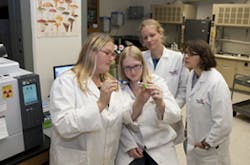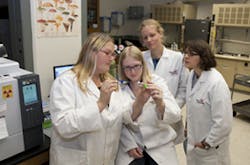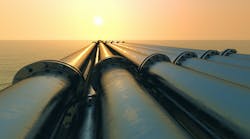New research shows that wastewater-recycling processes may generate more greenhouse gases than traditional water-treatment processes.
Amy Townsend-Small, assistant professor of geology and geography in the McMicken College of Arts and Sciences at the University of Cincinnati (UC), and a team of researchers from the University of California, Irvine (UCI), report this finding in the September-October issue of the Journal of Environmental Quality.
Researchers studied how different types of wastewater treatment affect the greenhouse gas nitrous oxide (N20), a long-lived and potent greenhouse gas, with a warming potential of about 300 times that of carbon dioxide, according to a UC news report.
“Just like carbon dioxide, nitrous oxide concentrations are increasing due to human activities,” Townsend-Small said, in a prepared statement. “Most of the increase in atmospheric nitrous oxide concentrations is due to the use of fertilizer in agriculture.”
Nitrous oxide is a by-product of the metabolism of two different types of bacteria. One bacterial type, the nitrifying bacteria, convert forms of reduced nitrogen (like ammonium) to oxidized forms of nitrogen (like nitrates). Another type of bacteria, the denitrifying microbes, convert nitrates into inert nitrogen gas.
“The same microbes that live in agricultural soils also thrive in wastewater treatment and water recycling plants,” Townsend-Small said. “The same nitrification and denitrification processes are employed in these plants to remove nitrogen from wastewater.”
Townsend-Small and her colleagues compared the nitrous oxide emission rates at two different types of wastewater treatment plants in southern California. The first type was a conventional wastewater treatment plant, where the objective is to remove organic carbon and return the treated wastewater to a river or the ocean. The second type was a wastewater recycling plant, where both organic carbon and nitrogen are removed, and the treated wastewater is used for irrigation of landscaping and urban greenspace.
However, she and her co-authors found that the wastewater recycling plant emitted about three times more nitrous oxide than the traditional treatment, when all factors are included. The researchers’ data indicate that dense populations of nitrifying and denitrifying bacteria in the wastewater recycling plant were the cause of these high nitrous oxide emissions. They also did preliminary calculations on the impact of wastewater recycling plants on nitrous oxide emissions in southern California.
“Because the Los Angeles area is so heavily urbanized, our calculations indicate that nitrous oxide emissions from wastewater treatment and recycling are several orders of magnitude larger than agricultural nitrous oxide emissions in the region,” Townsend-Small said.
Despite the production of nitrous oxide, the authors conclude that – taken in context – wastewater recycling is still a good idea.
The authors propose that cities allow recycled wastewater to supplement drinking water supplies, not just irrigation water.
“If wastewater recycling can supplement drinking water resources and not just irrigation water for landscaping, then overall greenhouse gas emissions could be reduced, as could the potential for water scarcity in southern California and beyond.” Townsend-Small said.
The research was supported by funding from the National Research Initiative of the U.S. Department of Agriculture (USDA) and the Urban Water Research Center at the University of California, Irvine.
To read the full UC news report, click here.



